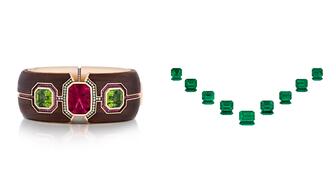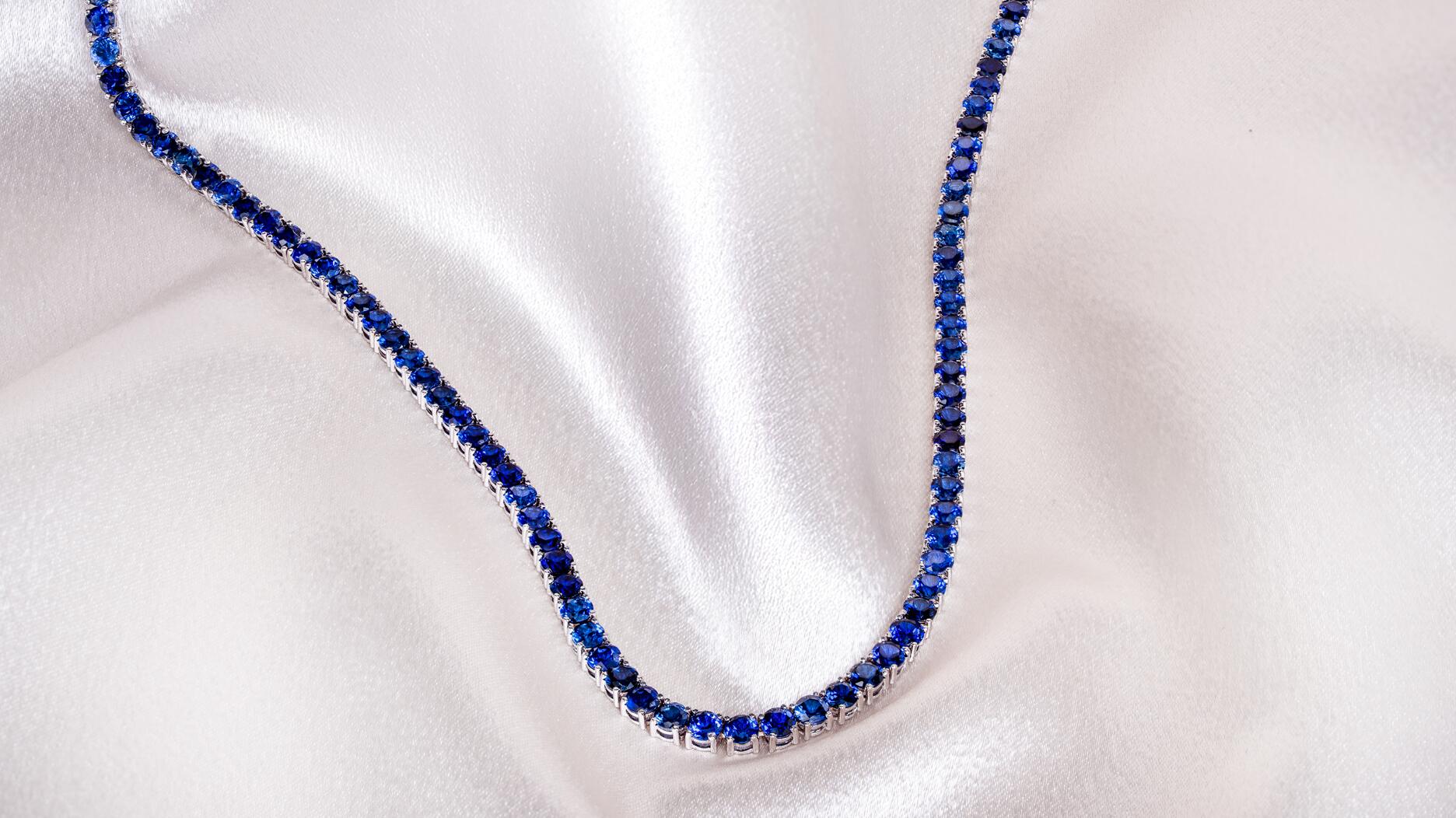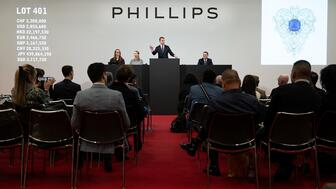A 43-carat sapphire brooch from the Vanderbilt collection was the top lot of the Geneva sale.
In the First Half of 2018, Consumers Searched For …
Cushion-cut diamonds, for one, Editor-in-Chief Michelle Graff reports after digesting the latest data from GemFind.

In April, I relayed the results of GemFind’s first annual report aggregating data from the jewelers’ websites that the company manages; the report told us what diamonds consumers were clicking on the most—though not necessarily buying—when browsing jewelry online.
GemFind President and CEO Alex Fetanat told me at the time that his technology company, which he founded in 1999, wanted to make a habit out of publishing these reports, providing the industry with consumer data regularly.
A few weeks ago, he reached out to share results from the semi-annual report for 2018, detailing clicks for the first six months of the year (Jan. 1 through June 30).
Below, I share five of the most interesting points from the report; the entire analysis can be viewed on the GemFind website.
1. The overall profile of the diamond most searched for by consumers didn’t change from 2017, which is not surprising.
According to GemFind, consumers looked for a 1-carat, round, G color diamond with VS2 clarity and a Gemological Institute of America grading report, which is pretty much the same diamond most consumers were looking for last year.
New for the semi-annual report, however, was the inclusion of consumer preference for cut grade, with excellent coming in first (65 percent) of searches for diamonds bigger than 0.25 carats, followed by very good at 19 percent and good at 9 percent.
2. After G, the most searched for diamond color was …
H at 15 percent, followed closely by F (14 percent) and I (13 percent). All told, 59 percent of diamond searches were for stones between F and I in color.
The two highest diamond color grades, D and E, were clicked on by 8 and 11 percent of consumers, respectively.
Fetanat said he was surprised to see I-color diamonds finishing ahead of both D and E but noted that, “I is definitely not the greatest color, but it’s more affordable.”
3. After VS2, the most searched for diamond clarity was …
SI1 and VS1 were tied as the second most searched for clarities, garnering 18 percent of searches in the first six months of the year, followed by SI2 at 15 percent, VVS2 at 10 percent and VVS1 at 8 percent.
Very few consumers were looking for diamonds that were internally flawless—IF diamonds accounted for 4 percent of searches—or at the other end of the clarity spectrum. Only
What this data tells Fetanat: For the most part, consumers are looking for eye-clean diamonds, meaning they don’t want a stone with visible flaws, but they don’t feel the need to pay money for a flawless diamond either.
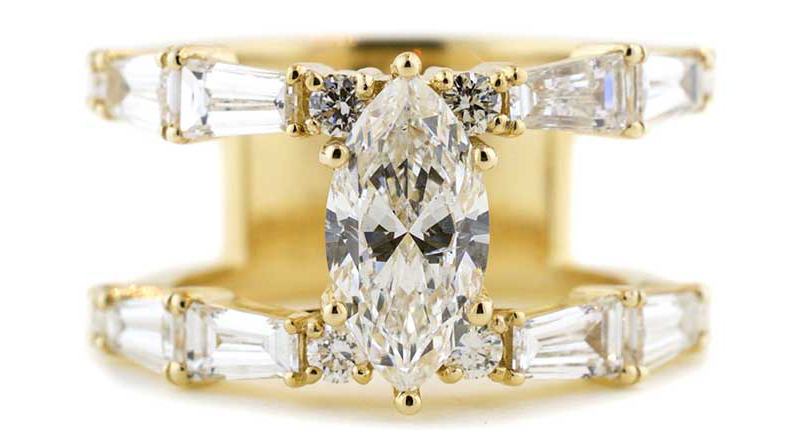
4. There was a bit of a shift in shape searches.
As noted above, the most searched for diamond shape was round, with the classic cut accounting for nearly 50 percent of searches in the first six months of 2018.
In second place, however, was not the princess cut or even the oval, which leapfrogged the princess to become the second most searched for cut shape of 2017.
It was the cushion, accounting for 11 percent of searches, followed closely by oval at 10 percent and the princess at 9 percent. Together with round diamonds, these three shapes accounted for more than three-quarters of all cut shape searches in the first six months of the year.
Other searched for shapes were: Asscher (7 percent), emerald (5 percent), radiant (4 percent), pear (3 percent) and marquise (2 percent).
5. There is solid interest in diamonds larger than 3 carats.
In the first six months of 2018, 46 percent of diamond searches were for 1-carat (25 percent), 3/4-carat (12 percent) and 1 1/2-carat diamonds (9 percent), none of which is surprising. Most consumers go for a diamond that is 1 carat exactly, or just under or above the 1-carat mark.
However, the third most searched for size (after 1 carat and 3/4 carat) was 3 carats and above, searched for by 11 percent of consumers.
Fetanat noted a couple of plausible reasons for the percentage of large diamond searches, including an improving economy and consumers searching not for engagement diamonds but for stones to mark milestone anniversaries, such as 10 or 20 years.
I also threw out a possibility with which Fetanat agreed—some consumers could be searching for larger diamonds simply out of curiosity. They want to see how much it would cost to buy a 4-carat diamond, or see what a 5-carat stone would look like on their finger, much in the same way one might look to see what $5,000 a month in rent will get you in Brooklyn (answer: not as much as you might think).
Jewelers, what do you think of the results of GemFind’s 2018 semi-annual survey? Do they match what you see consumers inquiring about and buying in your stores?
The Latest
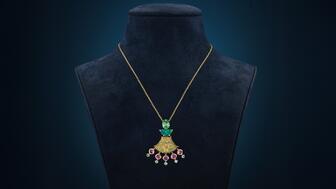
Rau is a fourth-generation art and antique dealer from M.S. Rau gallery whose first jewelry collection merges artifacts with modern design.

Former De Beers sustainability leader Purvi Shah will take over the role in February 2026.

How Jewelers of America’s 20 Under 40 are leading to ensure a brighter future for the jewelry industry.
La Joux-Perret is based in La Chaux-de-Fonds, Switzerland, and makes solar quartz as well as mechanical watch movements.


She previously taught at Gem-A and is the founder of The Gem Academy.

The British actress and her daughter modeled pieces from the brand’s new “Palette” capsule for its “Once Upon a Time” holiday campaign.

Roseco’s 704-page catalog showcases new lab-grown diamonds, findings, tools & more—available in print or interactive digital editions.

Plus, the tech giant shares the steps retailers should take if they believe they’re a victim of a review extortion scam.

Danny and Gaby Shaftel are now Shaftel Diamonds’ CEO and chief operating officer, respectively.
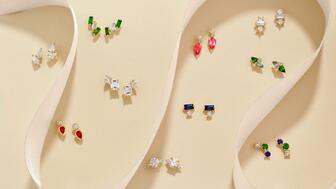
The jewelry manufacturer’s seasonal offering features its new “Melodie” bangles, as well as mini stud earrings and layering pieces.
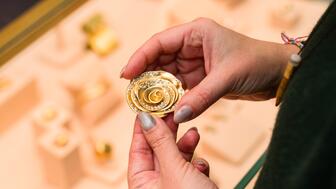
With more than 140 activations taking place in New York City now through Nov. 23, these 12 events are can’t-miss moments.

The Chapter 11 filing follows the resignation of CEO Moti Ferder, who stepped down after an investigation into the company’s finances.
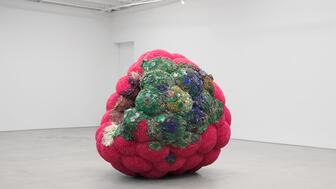
The artwork is part of an exhibition featuring works by Kathleen Ryan, an artist known for her gemstone-studded rotting fruit sculptures.
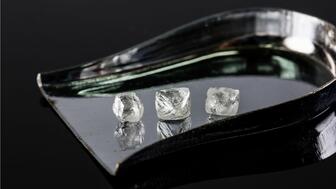
Mark Wall, president and CEO of Canadian mining company Mountain Province Diamonds, will vacate his position next month.

Faustino Alamo Dominguez and his son, 25-year-old Luis Angel Alamo, were gunned down following an armed robbery at their jewelry store.

Tiffany & Co. veteran Jeffrey Bennett has stepped into the role.
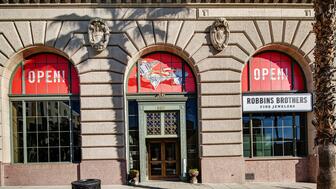
The showroom is located in a historic 1920s building in the Playhouse District.
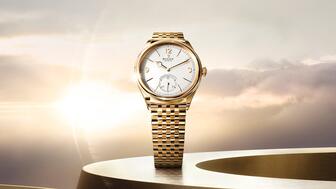
The Swiss government announced the deal, which cuts the tax on Swiss imports by more than half, on social media Friday morning.

A buyer paid $4.4 million for the piece, which Napoleon wore on his hat for special occasions and left behind when he fled Waterloo.
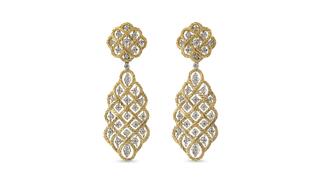
Plus, how tariffs and the rising price of gold are affecting its watch and jewelry brands.
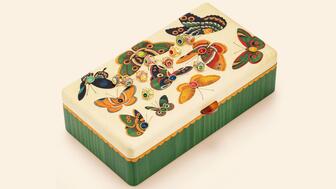
Furmanovich designed the box to hold Mellerio’s “Color Queen,” a high jewelry collection consisting of 10 rings.

Jennifer Hopf, who has been with JCK since 2022, will lead the execution of the long-running jewelry trade show.
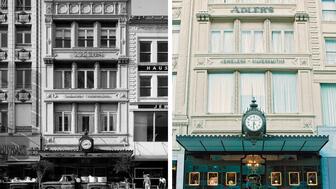
Adler’s Jewelry is set to close its two stores as 82-year-old owner Coleman E. Adler II retires.
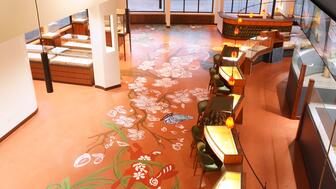
Founder Jim Tuttle shared how a dedication to craftsmanship and meaningful custom jewelry fueled the retailer’s double-digit growth.
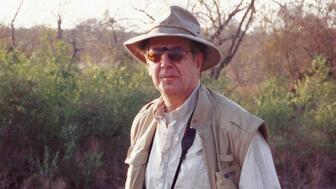
The third-generation jeweler is remembered as a passionate creative with a love of art, traveling and sailboat racing.

JSA and Cook County Crime Stoppers are both offering rewards for information leading to the arrest of the suspect or suspects involved.


